Ragtime Era Dance Fashions
1912-1915
Images and notes by Richard Powers
You'll find a summary of all of the fashion trends and details at the bottom of this page.
Click here for a short page on the Social Dances of the Ragtime Era.
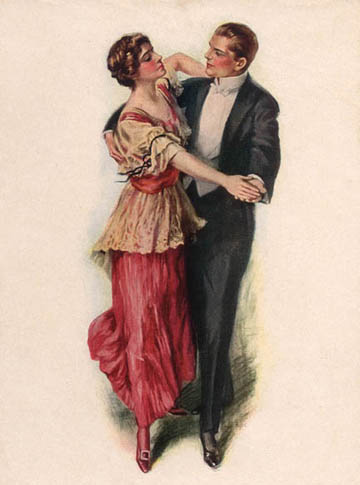
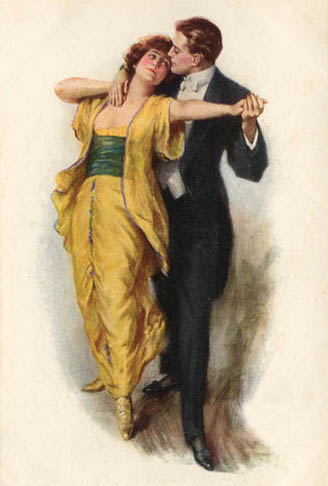
All photographs, and most illustrations from the period, were black-and-white.
This page features the rarer color illustrations from this era.
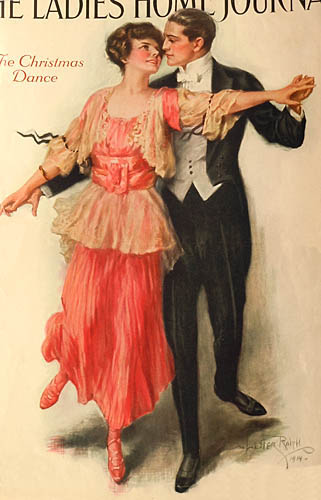
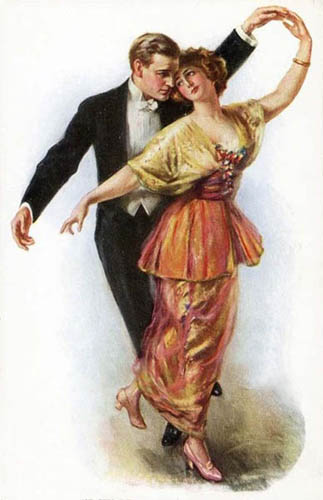
Most of the dance frocks on this page have an upper bodice with a peplum that flares out below a somewhat high waistband.
Below the bodice, an ankle-length skirt often tapers to a narrower base, reminiscent of the silhouette of the 1910 hobble skirt fad.
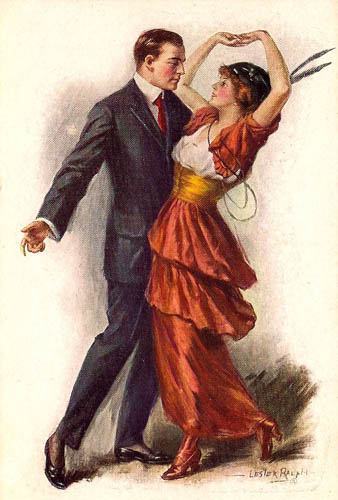
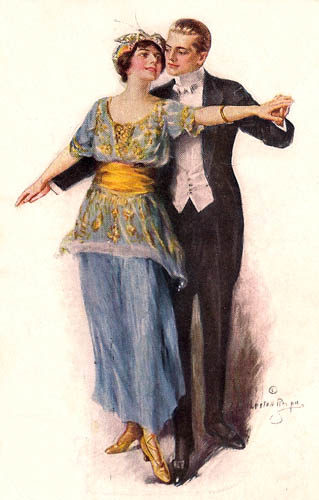
The six ragtime era dance frocks above are American, but they were inspired by the Parisian
fashions of Paul Poiret, Jeanne Paquin and others. The three Parisian designs below are from 1913:
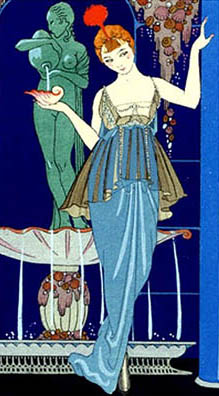
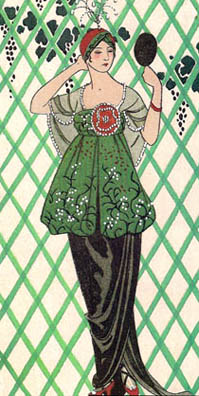
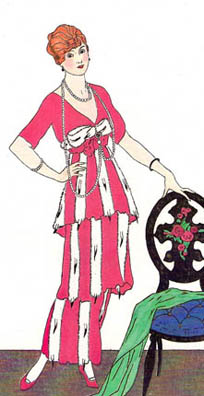
This is a Greek revival style, similar to the high-waisted Regency Era fashions from a century earlier.
On the left below is a 1914 Poiret design. Note the many similarities to the dress on the right from 1801.
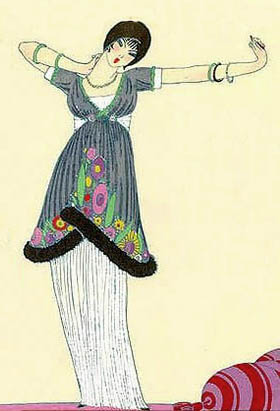
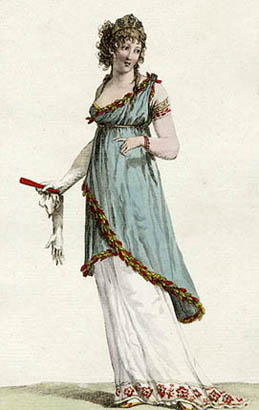
More American, French, English and German ragtime era dance fashions
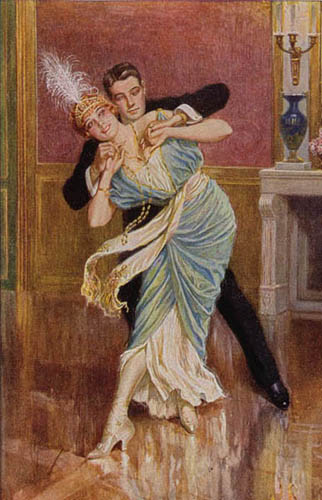
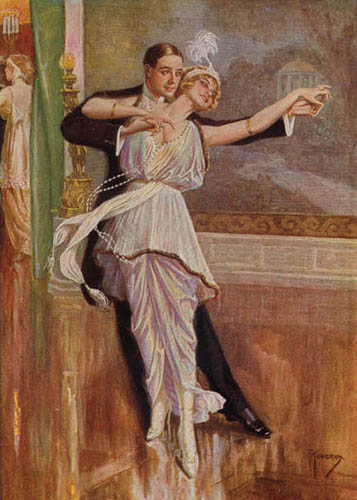
The earlier hobble skirts restricted movement but dance frocks often featured a split skirt to allow movement. Some of these
illustrations show the inner skirt behind the split, sometimes a chiffon, lace or accordion-pleated petticoat under the split.
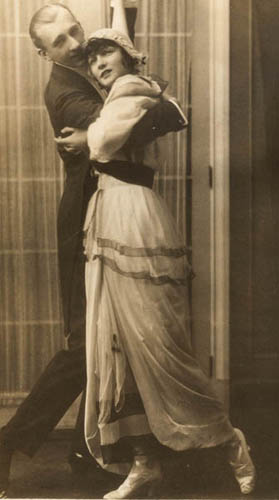
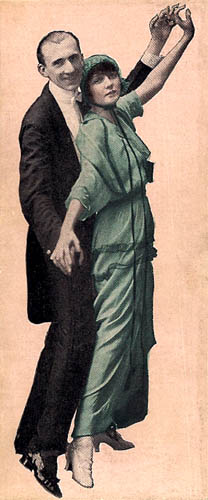
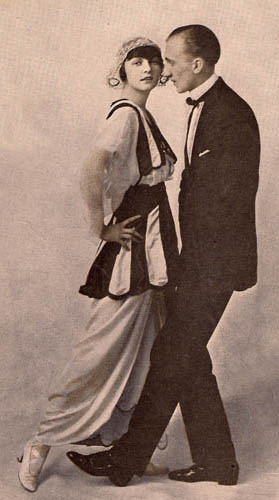
Gentlemen's attire for dancing: Most of the men on this page are wearing a formal black tailcoat with a white bow tie, wingtip
collar and white vest. In the photo on the right above, Vernon Castle is wearing a rare exception, a less formal tuxedo with a black bow
tie. Only a quarter of the gents on this page are wearing white gloves, while most are following the "modern" style, without gloves.

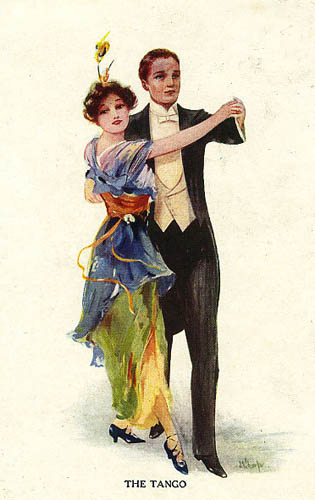
Note the variety of feathers, caps and headbands that two-thirds of the women on this page are wearing.
Some of the women above have no headdress at all, to better feature their new shorter hairstyle.
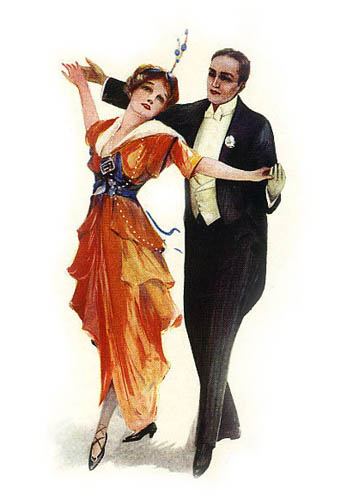
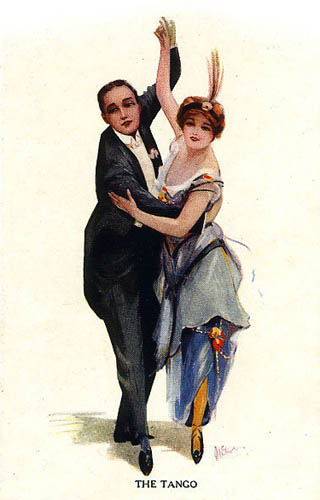
The frocks below left
 and above left
and above left  share a similar design, providing an alternative to the peplum while keeping the high waistline and tapered silhouette.
share a similar design, providing an alternative to the peplum while keeping the high waistline and tapered silhouette.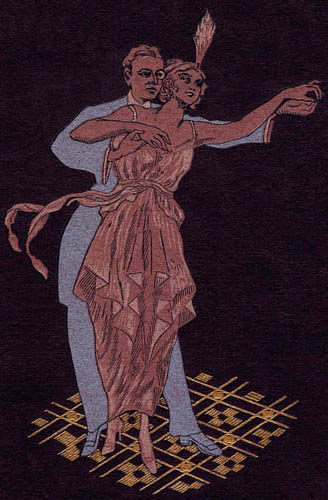
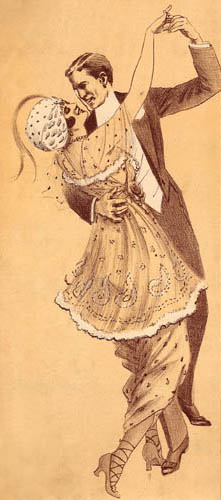
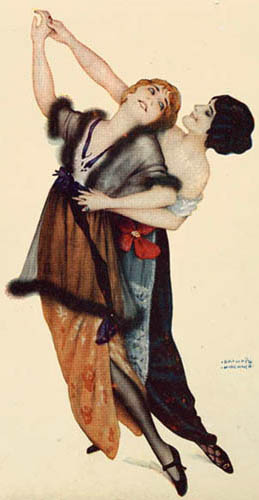
The Parisian Femina covers below are from October 1913 and January 1914.
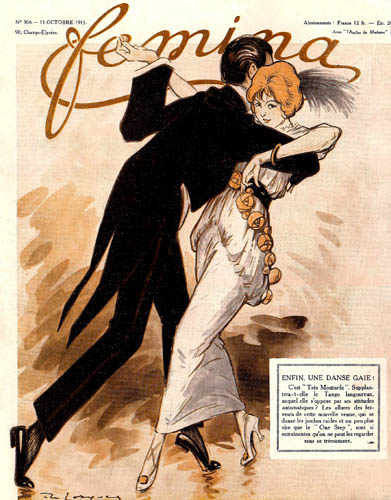
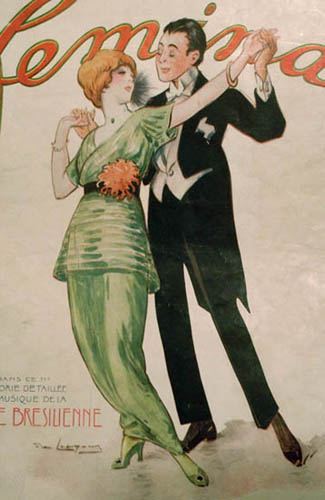
The gown below on the left is white with black accents, which had been a popular color scheme for centuries.
Note the exception of the man's black bow tie with formal tails, possibly to match her black accents.
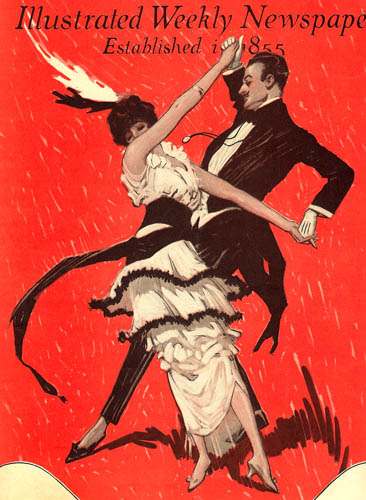
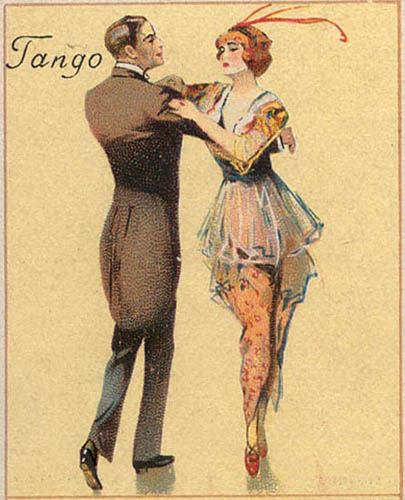
Almost half of women on this page are wearing wrist bracelets, but not much jewelry was worn. Simplicity
was the "modern" reaction against the costume jewelry that their mothers and grandmothers had worn.
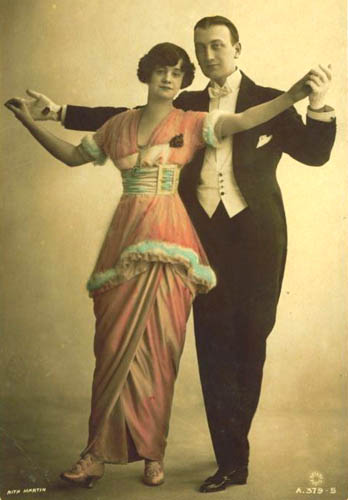
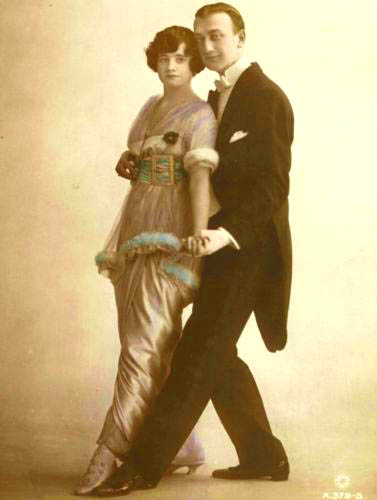
Use caution in adopting the colors from hand-tinted photographs, which may or may not represent the actual colors.
The green dress on the right below provides another alternative to the peplum style.
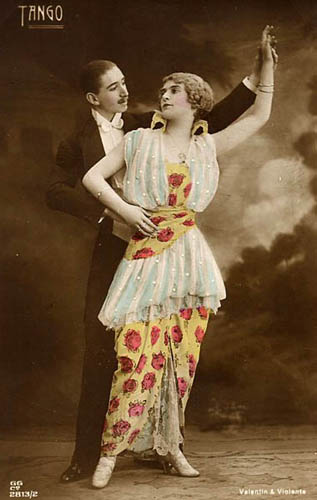
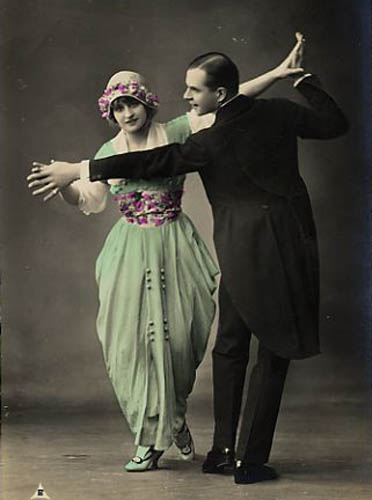
Close-ups of those shoes:
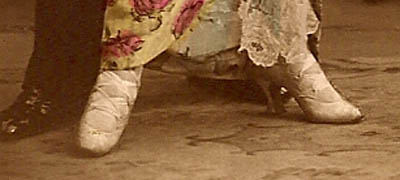
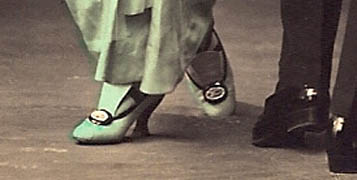
More ragtime era shoes, from 1914:
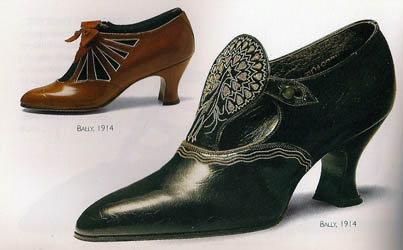
The simple frock below is easier to make. The two photos below are of the same costume but hand-tinted by
different postcard colorists, one of them painting white beads onto the postcard. Note the details on the
shoes of both the gent and lady. "Grecian" ribbons on women's dance shoes were fashionable at the time.
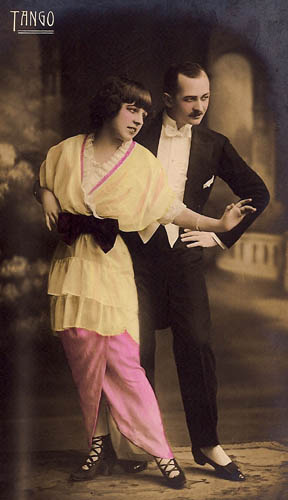
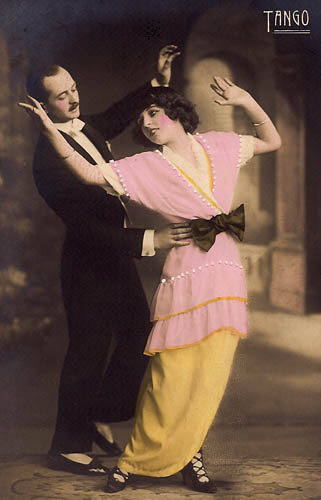

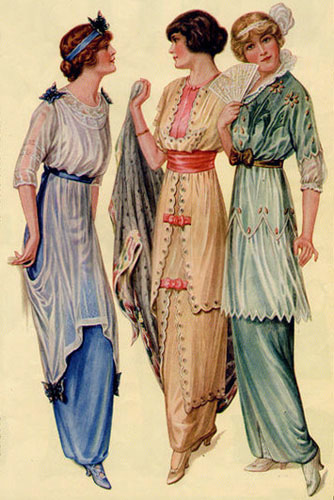
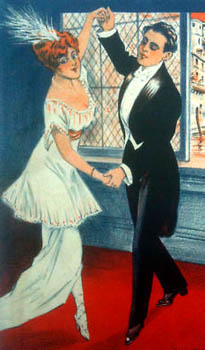
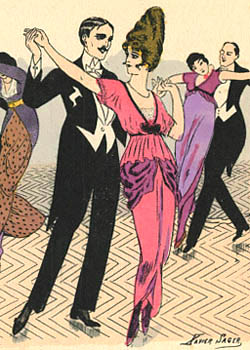
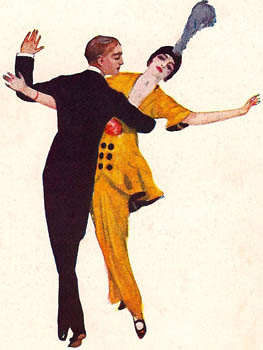
Below are a few rarer examples of women dancing in dresses with long sleeves, perhaps outdoors.
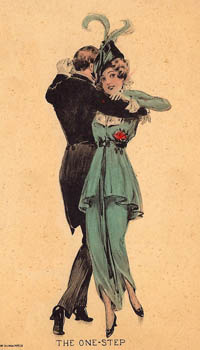
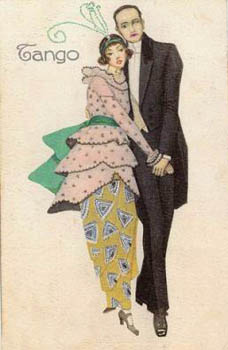
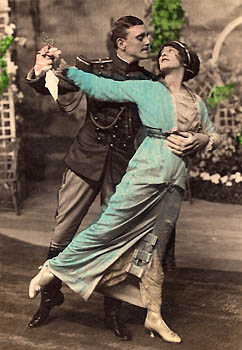
Below is another exception to men's formal black tailcoats — sports jackets could be worn for outdoor
al fresco dancing. Women sometimes wore long sleeves and larger hats when dancing outdoors.
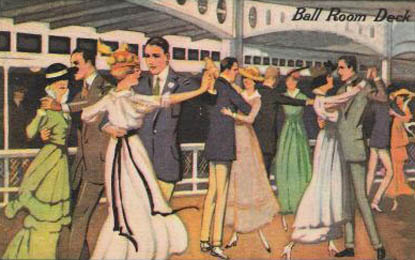
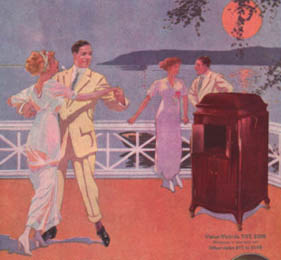
|
Summary: If you want to capture the essence of Ragtime Era dance fashions... • The most popular dance frocks had peplums, with a somewhat high (Empire or Greek style) waistline. • The skirt was often split, to allow dancing, with an inner skirt or accordion-pleated petticoat under the split. • Arms were often bare, or sleeves came down halfway, more or less to the elbows. • Some frocks have trailing ribbons here and there. • Some women are wearing wrist bracelets, but not much jewelry was worn. Simplicity was the "modern" reaction against the costume jewelry that their mothers and grandmothers had worn. • Feathers were the most popular headdress for women, in a wide variety of styles, often held with a headband. • Caps or a wide variety of small hats were also worn. The Dutch cap was Irene Castle's personal trademark. • Some of the women above have no headdress at all, to better feature their new shorter hairstyle. • Women's dance shoes had French (splayed) heels, and were often decorated or attached with "Grecian" ribbons. • For dancing, men customarily wore a formal black tailcoat, even in the afternoon, with white bow tie and white vest. • Only one-quarter of the men above are wearing white gloves. Most are more "modern" with bare hands. • For shoes, many of the men above are wearing dancing pumps, which are hard to find today. None are wearing spats. This describes the most distinctive look of Ragtime Era dance fashions. There were plenty of exceptions — harem pants for women (especially under the split skirt), turbans, simple straight dresses (rare), long sleeves (rare), women still wearing outdated fashions like hobble skirts and long hair, less formal tuxedos or Eaton jackets for men, and sports jackets for al fresco dancing. |
Illustrations collected and restored by Richard Powers. Please do not reproduce without permission.